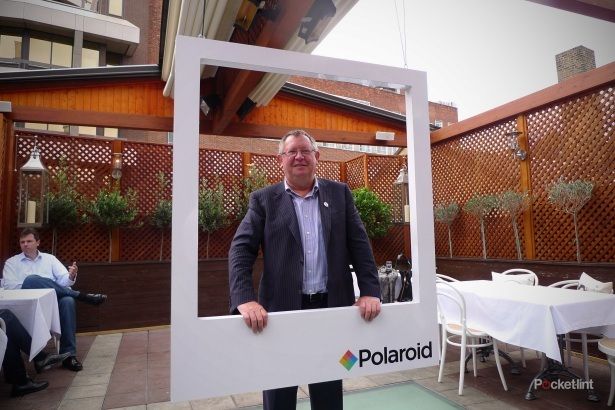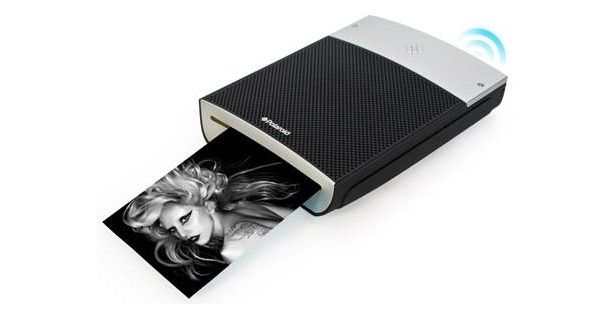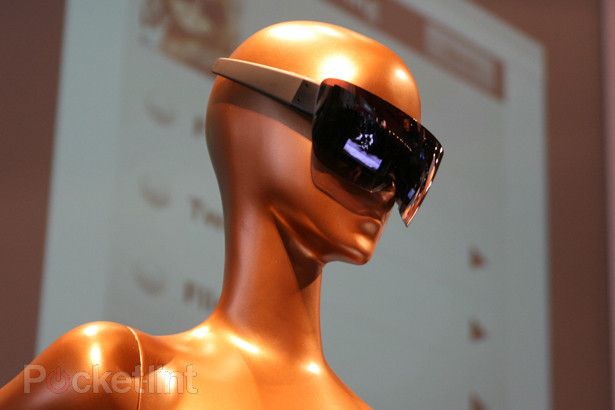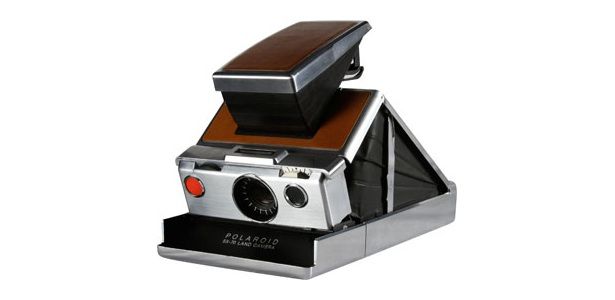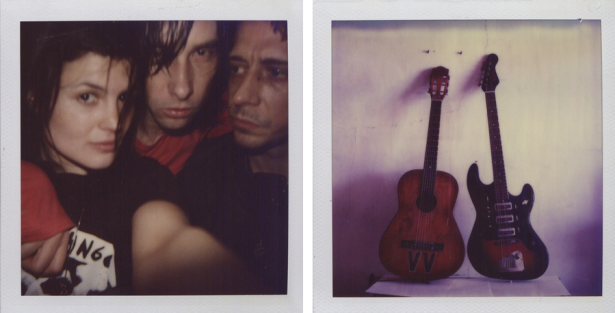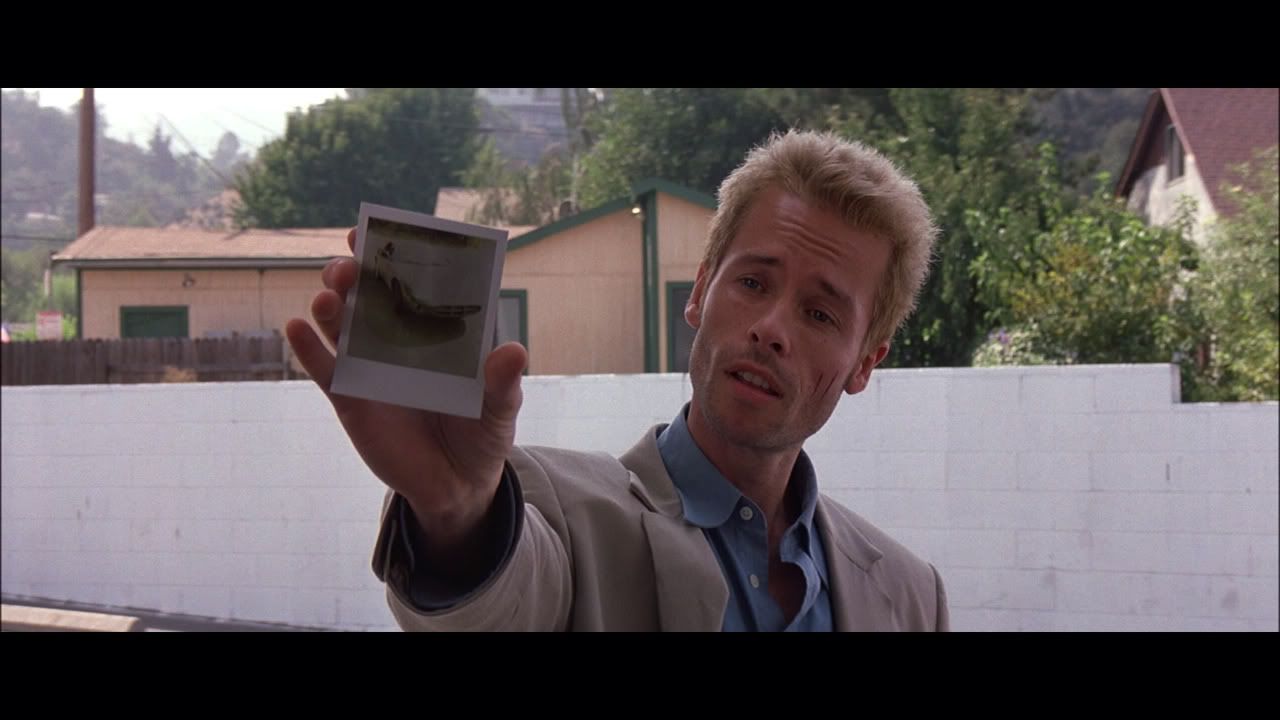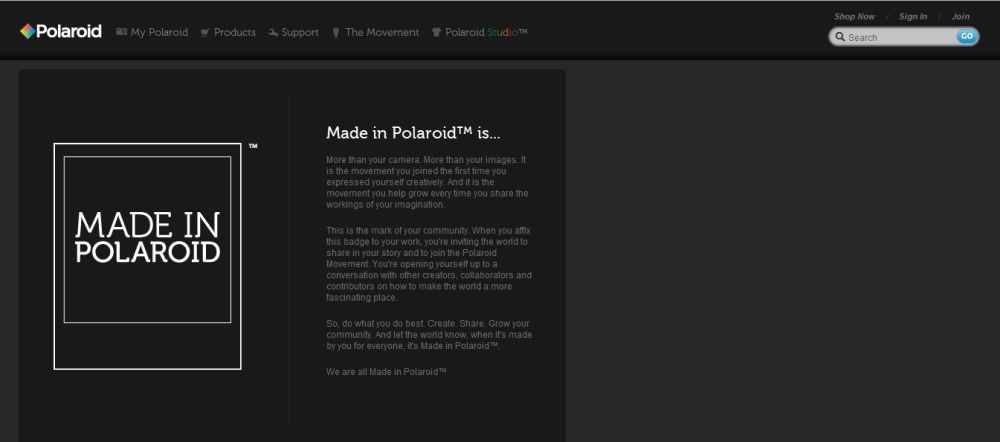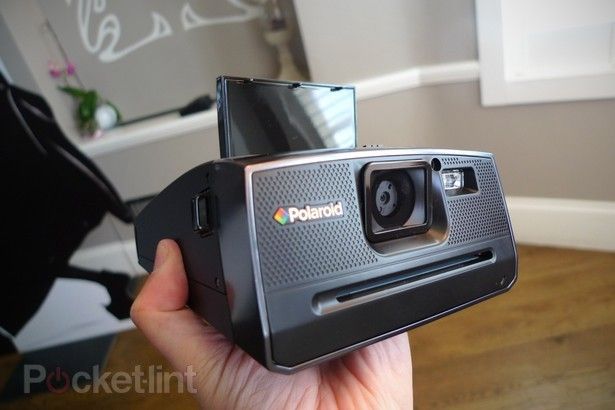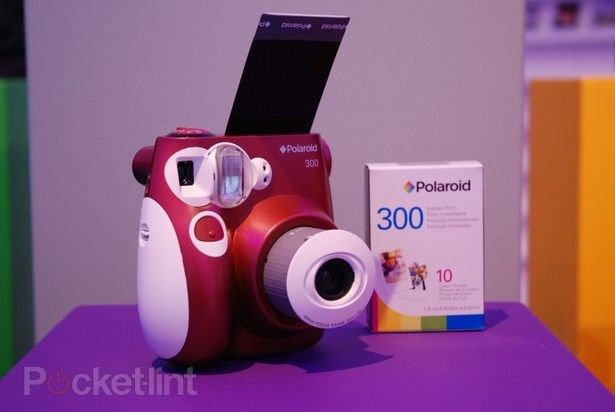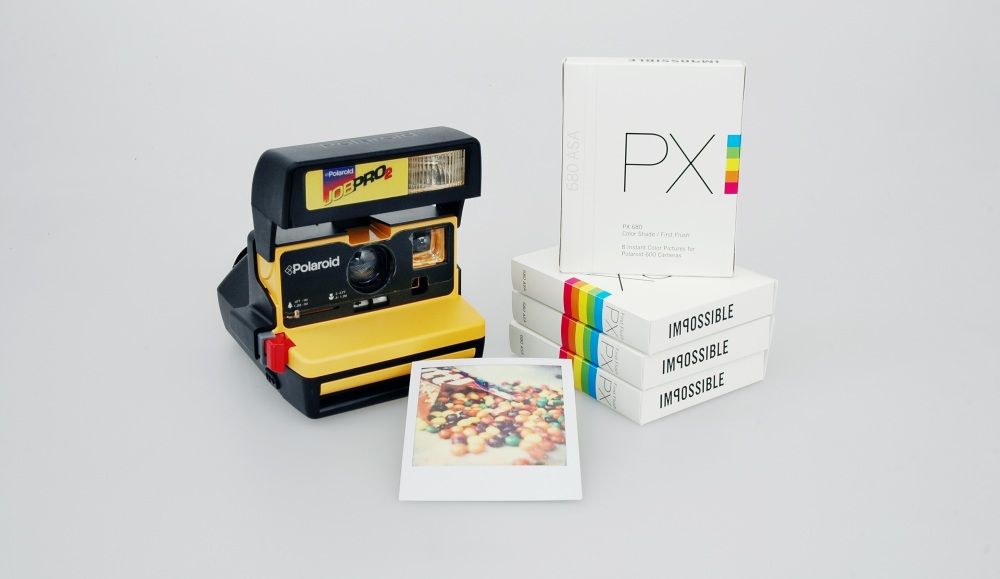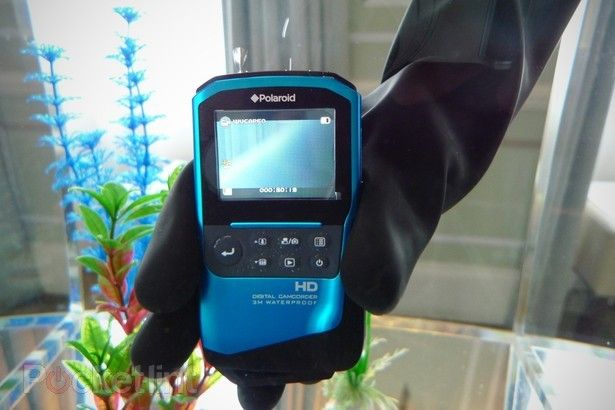In musical terms, kooky popstrel Lady Gaga, singer-songwriter and actor Sting and rock duo The Kills haven't got much in common, but one thing that they all share is a passion for Polaroid. In fact, Gaga is such a big fan of the cult instant-photo brand that the company recently took the unusual step of making her its creative director.
We settled down for a chat with Polaroid MD Graeme Chapman to find out more about how the brand has risen from the ashes after going bankrupt, not once but twice, and just what on earth he was thinking when he offered one of music's most eccentric stars a seat on the board.
"Lady Gaga has introduced us to a whole new audience who've never experienced Polaroid before. For the 18-25 year olds, it's a completely new thing."
Seated on the sunny roof-top terrace of a well-known Greek restaurant in central London - a venue that has played host to The Beatles and the 1966 world cup-winning team, among others - Chapman explains that this isn't merely a case of a celebrity slapping their name on a product - Gaga genuinely does get involved.
"She was using Polaroid cameras at her concerts - taking snaps of her audience and then handing them out to the crowd. She wanted to be involved and had some ideas that she wanted to develop. At first, she was employed as a brand ambassador but very quickly we realised that her ideas were worth pursuing and that she wanted to play an active part in developing the products, so she's now creative director."
The Polaroid Grey Label range is the result of the Lady Gaga collaboration and comprises three products, the first of which - the GL10 instant printer - has just been launched. Using Zink inkless printing, the compact printer can be used to print photos from your mobile phone, via USB or Bluetooth. The printer is compatible with most handsets, including Android, BlackBerry and Windows models, but not iOS devices. However, that's something that's set to change in the not-too-distant future.
"We're working on things with Apple and we hope that we'll be able to announce something in early 2012."
The remaining two products from the Gaga-led Grey Label range are set to launch in 2012. The GL30 camera will offer instant snaps, along with a pop-up screen to view them before printing, while the slightly more quirky GL20 glasses will incorporate a tiny camera along with two forward-facing screens to show off your snaps.
While Polaroid may not seem synonymous with flogging specs, it did, in fact, start out selling polarized glasses when it was was founded in 1937, and it wasn't until 1948 that the brand started offering the instant film cameras that it's now famous for. The first commercially available model was the Polaroid Land Camera Model 95 which used sepia-tone film. Black and white Polaroid film was introduced in 1950, followed by colour film in 1963. Despite several decades of strong sales, the original Polaroid Corporation filed for bankruptcy in 2001 and then the "new" Polaroid once again went bankrupt in 2008.
"In 2009, the company was bought for $87 million in a joint venture, by two investors - Boston-based Gordon Brothers Brands and Canadian Hilco Consumer Capital. They were Polaroid fans and saw the value of the brand. They then licensed the name to various product manufacturers, including camera, TV and sunglasses makers, in effect, bringing the brand back to life."
With 28 years of working at Olympus under his belt, Chapman has plenty of experience when it comes to running a successful camera brand and came out of retirement especially to head up the UK Polaroid operation, telling us that it was his passion for the company that sealed the deal.
"I wouldn't have come out of retirement for any other brand."
As a long-time aficionado of the Polaroid products, Chapman owns around 45 cameras with his favourite being the the SX-70, which he describes as a "a groundbreaking product when it was launched. A camera that folds flat - it was way ahead of its time."
Introduced in 1972, not only was the SX-70 able to fold up flat (supposedly small enough to fit into a suit jacket pocket), it was also the very first instant SLR camera as well as being the first model to use Polaroid's SX-70 integral print film - the first to develop automatically in daylight. Although production ceased in 1981, the SX-70 remains a firm favourite among Polaroid fans and has its own Flickr group and Facebook fan page.
Despite having successfully carved out a niche for itself in the camera market with some truly unique products, the original company's lack of foresight in pre-empting the effect that digital cameras would have on film photography is widely regarded as being the reason for its downfall. However, according to Chapman, that doesn't mean that there isn't a place for both film photography and digital snaps.
"Digital photography is all about perfection - the camera can do all the work for you. With film cameras, there's a lot of skill involved, not only with taking the pictures, but with developing the films and a lot of photographers miss that creativity. With Polaroid, you can experiment and that's what a lot of people like about it.
"It's not meant to rival digital. It's about fun and sharing. Instant cameras are aimed at a completely different usage to digital products."
The creative angle, a good dose of retro chic, is what drives a lot of photographers to use instant photography and has also made it popular with arty types and musicians. Rock duo The Kills kicked off their most recent tour at the SXSW festival, documenting their travels with a Polaroid snapper and uploading the results to a gallery on the company's website.
The format is certainly compelling, but just what is it that makes the Polaroid brand so popular and made it possible to reanimate its fortunes? Chapman suggests that the nostalgic quality of the brand means that it occupies a special place in people's hearts.
"We've done a lot of research in the US on the brand's strengths and it's an iconic name that's up there with Kodak and Hoover in terms of being instantly recognisable. A lot of it goes back to taking pictures and putting them on the fridge, and people have grown up with that."
Chapman also agrees that the success of lo-fi camera brands such as Lomography, as well as the growing popularity of retro camera apps for mobile phones, such as Hipstamatic, have had an inpact.
"The Lomo brand and the huge selection of vintage camera apps has brought the idea of old-style photography to a whole new generation. I use the Polaroid PoGo Android app and I especially like taking pictures in sepia."
The Polaroid brand certainly has a strong heritage in popular culture, making appearances in a diverse range of films including 80s screwball comedy Desperately Seeking Susan and psychological thriller Memento and even getting a shoutout in Outkast's excruciatingly overplayed hit song "Hey Ya".
Often associated with blackmailers, kidnappers and amateur pornographers in the movies, the humble Polaroid is also used in a wide variety of commercial settings, such as continuity for films and in the fashion world. The fact that snaps can't be easily tampered with also makes them a useful tool for the police, who use them (alongside digital snaps) to document crime scenes. Chapman tells us proudly about one of the more recent applications for Polaroid cameras:
"What's interesting is that UNICEF has been making use of Polaroid cameras when they go to potentially unstable areas. Carrying around bulky SLRs and lots of camera equipment can appear intimidating to the local population. Now, UNICEF photographers routinely take Polaroid cameras with them so that they can take snaps to give out to people, which helps them to break the ice."
While the older cameras are still used in many commercial and diplomatic settings, it's the fun aspect of instant pictures that appeals to many. Nowadays, it's impossible to separate photography from the idea of photo sharing, whether that's on Facebook, Flickr or even Google+. Chapman argues that Polaroid was something of a pioneer for the community-focused, social networking aspect of photos that continues to flourish today.
"Before Twitter and Facebook, the only way to share your photos instantly was Polaroid. That's what's appealing to the new generation now. They can take a picture on their phone, but they can't easily print it out (unless they've got a GL10).
While we can all share our digital snaps using the likes of Facebook or Flickr, what happens when you've got actual prints? Well-known analogue photography brand Lomography has a global site where snaps can be shared, but these can be put onto disc when developed, with hard copies being optional. How can you share instant photos with those not in your immediate vicinity? The Made in Polaroid website offer users the chance to share their pictures online, although these will obviously need to be scanned in first. However, all that is set to change with the company's latest model - the Polaroid Z340 - which gives you the best of both worlds.
"The good thing about the new camera is that it's instant as well as digital so you can store and upload the snaps to the site or to social networking sites, as well as printing them out directly from the camera."
Set to launch in time for Christmas, the Z340 will cost £229.99 and will incorporate a pop-up screen so that shots can be easily composed and then reviewed before being saved or printed (or discarded). The built-in printer uses zero-ink Zink paper which has three layers of dye crystals that are heat-activated to produce an image. Once printed, the pictures are designed to be water resistant, smudge proof and tear proof. The company first used Zink technology in its PoGo printer which launched in 2008 after being in development for over 10 years.
"We've collaborated with Zink which is really a 21st century technology. Standards change over the years and what was acceptable 20 years ago in terms of health and safety isn't acceptable now. Prints have to be safe, for example, the substances used need to be non-toxic in case children put them into their mouths."
Fans of the old-style, white-bordered Polaroid shots may be disappointed, though, to find that the newer prints aren't the same size as the originals that they will be used to. The most well-known classic Polaroid films (SX-70 and 600) measure 3.5 x 4.2 inches, with the actual image measuring just over 3 inches square. The Zink prints produced by the GL10 printer and the upcoming Z340 camera measure 3 x 4 inches, and you'll have the choice of either printing full bleed snaps or adding the classic white Polaroid border. That means that overall, the snap itself is only slightly more compact than the old-school ones, but if you choose to add a border, then the actual image will be smaller than the originals.
The company also sells the Polaroid 300 camera (essentially a re-badged Fujifilm Instax Mini 7S) that uses old-style developing technology, rather than the updated Zink technique. The company has struggled to keep up with the staggering demand for the 300 since it was introduced in 2010, although it's worth noting that once again, the camera doesn't produce old-style square prints. Although it uses self-developing film, the prints measure around 3.5 x 2.25 inches - not far off the size and shape of an iPhone screen.
The new formats look great, but what about the Polaroid purist who want to stick to the old square format? Is this the end of the line for them? Not at all.
"There's still a lot of the old film stashed around here and there. There's lots available on the Internet (especially on Ebay). Obviously it's out of date, but that's part of the charm. When you load it into your camera, you don't know what you're going to get. The results can be really quirky and interesting and lots of photographers love that as they're in the hands of the developing process and the results can be different every time."
As well as substantial, albeit ever-decreasing, supplies of the original stock, available from various internet sources, there is also one company that produces new instant film for classic Polaroid cameras. The Impossible Project was founded in 2008 by Forian Kaps and André Bosman, who met at the closing event of the Polaroid factory in Enschede in The Netherlands. It was there that they decided not to accept the death of instant photography, not without a fight. The two instant photo fans purchased production machinery from Polaroid and eventually launched their first new instant film in 2010 - the monochrome PX 100 and PX 600 Silver Shade, followed several months later with their first colour film. The venture also sells off remaining stocks of old Polaroid film as well.
So, with the success of The Impossible Project as well as the hard-fought bidding battles on Ebay for out-of-date film, it seems that there's still plenty of interest in the creativity offered by film photography, but do people really still want hard copies of their photos, especially ones that won't even last for that many years?
"Yes, definitely - there are still spaces on the fridge to fill! People miss rooting through boxes of pictures and the nostalgia that goes along with it."
Chapman also agrees that many people are concerned that photos that are stored digitally could potentially be lost, either as the result of technical problems or innovations, with existing picture formats eventually becoming obsolete - another compelling reason not to let the practice of keeping hard copies of photos die out.
With its Lady Gaga-influenced Grey Label range, along with its first waterpoof camera and camcorder (the X800E and X720E) due to hit the shops during the following year, what else can we expect to see from Polaroid in the coming months? Chapman was guarded when it came to giving away too many details, but it sounds as though we can expect plenty of new kit from Polaroid in 2012.
"We'll be launching lots of new cameras next year. The company is back to full health and we've got lots of activity planned in for the next 3 years. We'll be introducing cameras that are not only unique because of the instant photos that they offer, but also in terms of their aesthetics. We're aiming to differentiate by design - something which is very important to our brand and our target audience. We're also developing a couple of mobile phone apps which will enable you to take Polaroid-style pictures with the classic border with the company logo on it."
With plenty of new Polaroid kit on the horizon, it seems that instant photography is back with a vengeance - only this time, it's digital.
Are you a Polaroid fan? Will you be investing in one of the new cameras or kicking it old-skool with a vintage model?

